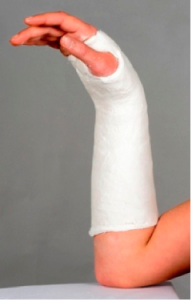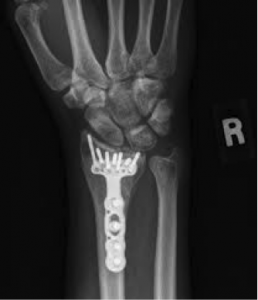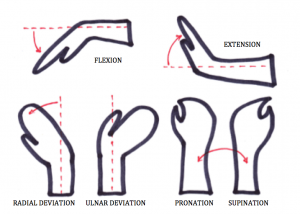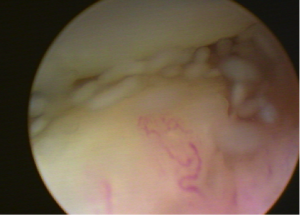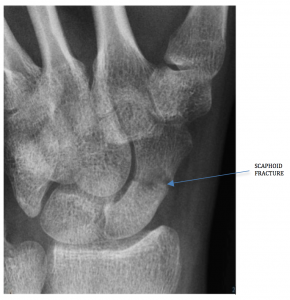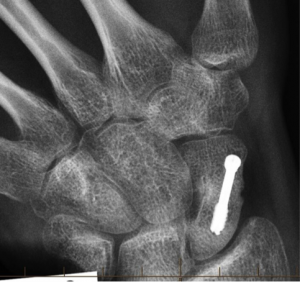Wrist Services
Services offered by:
Mr. Richard Large, Mr. Andrew Weber
-
Wrist Fractures
WRIST FRACTURES
Mr. Andrew Weber & Mr. Richard Large
Indications
Many fractures of the wrist can be managed conservatively in plaster for six weeks. Fractures (broken bones) that are minimally displaced, well aligned and closed usually heal well without the need for surgery.
Wrist fractures that are displaced, involve the joint or that are angulated may require surgical fixation.Relevant Investigations
X-rays provide the important diagnostic information that the orthopaedic surgeon requires to determine the optimal management for your wrist fracture.Procedure synopsis
A GAMP (General Anaesthetic, Manipulation & Plaster) may be performed to help re-align the bones. This is a procedure that does not involve any surgical incisions. Under a general anaesthetic, the orthopaedic surgeon will manipulate your wrist to straighten the bones. Once the position is optimal then plaster is applied to hold this for six weeks.An ORIF (Open Reduction, Internal Fixation) of the wrist fracture is the surgical procedure of choice for more complex wrist fractures. This procedure requires a general anaesthetic and brief stay in hospital
Rehabilitation
You will have 6 weeks of immobilisation and during this period you will need to maintain the movement in all of the joints that are not restrained by the cast. This will include regularly bending and straightening your fingers, thumb and elbow. We also encourage you to regularly move your shoulder and neck to prevent discomfort.After the removal of your cast, you will be able to commence range of movement of your wrist. There is no restriction on the movements you are able to perform, but it is recommended that you avoid lifting anything heavier than a coffee cup until 12 weeks post injury.
Complications
Any operative procedure has potential complications. These will be discussed fully with you at the consultation. -
Wrist Arthroscopy
WRIST ARTHROSCOPY
Mr. Andrew Weber & Mr. Richard Large
Indications
An arthroscopy of the wrist is a surgical procedure used to assess if there is any damage to the internal structures of the wrist.Relevant Investigations
X-raysProcedure synopsis
Wrist arthroscopy is performed under general anaesthetic. A number of small incisions are made to insert a camera into the joint. Small tools are also able to assist by shaving off any imperfections or removing any loose bodies.
Wrist arthroscopy is often performed as day surgery and you will be able to go home in the late afternoon following surgery.Rehabilitation
You will leave hospital with bandage on your wrist. Under this will be some waterproof dressing. Please leave these dressings intact until your post operative visit at one week post op. You must keep these dry. You will be prescribed some pain medication and it is recommended that you take this regularly to stay on top of your pain. Gentle range of motion exercises for your wrist can be commenced straight after the surgery. You should expect the wrist to be painful although early movement will prevent stiffness. Do not lift anything with your operated arm for the first week after surgery.These are the range of motion exercises to be performed immediately after the surgery:
Complications
Any operative procedure has potential complications. These will be discussed fully with you at the consultation. -
Scaphoid Fractures
SCAPHOID FRACTURES
Mr. Andrew Weber & Mr. Richard Large
Introduction
The scaphoid is one of the larger bones in the wrist and one that links the two rows of bones. It receives its blood supply from the far end. The end of the scaphoid nearer the heart, is situated within the joint and relies on the blood coming back from the far (finger) end. As the scaphoid links the two rows of the wrist, it is vulnerable to injury. A fracture through the middle of the scaphoid therefore only has a blood supply on one side, and linking the two rows of the wrist the scaphoid is more mobile. As such, the scaphoid has a bad reputation for not healing.
If this fracture should not unite, the part of the scaphoid with poor blood supply, may crumble away, over many years, potentially leaving this patient with arthritis, that is, pain and stiffness.Indications
A totally undisplaced fracture from a low speed injury can be appropriately managed in splint or plaster. A displaced, or higher forced type injury, is often internally fixed. A scaphoid fracture though is often not diagnosed for some time down the track, and the patient’s often present with a non-union type situation, which then warrants open reduction, internal fixation and bone graft. This bone graft may be taken from the forearm or pelvic bone, depending on the fracture and approach.Relevant Investigations
Diagnosis of a scaphoid fracture is usually made with an X-ray, but there are “scaphoid views” to obtain. An MRI in the acute stages or a CT in the later stages may be used.Procedure Synopsis
Depending on the fracture, an approach may be made from the front or the back of the wrist, but the front is more common. Through a small incision across the skin creases at the front of the wrist, tendons are retracted and the fracture exposed. In an acute setting, the screw is placed across the fracture with compression. In the chronic, non-union situation, a bone graft is inserted prior to the screw obtaining compression.The position of the screw and the fracture fixation is checked with an X-ray machine in theatre, before the wound is closed and the patient placed in a plaster or splint.
Rehabilitation
A scaphoid, as mentioned above, has many factors that effect healing. As such, it often takes longer to heal, that is usually longer than the typical six weeks of other bones. X-rays at this stage give some idea of progress, but a lot of scaphoid fractures will take longer and will require prolonged splinting until healed.
During this period of immobilisation you will need to maintain the movement in all of the joints that are not restrained by the cast. This will include regularly bending and straightening your fingers, thumb and elbow. We also encourage you to regularly move your shoulder and neck to prevent discomfort.
After the removal of your cast, you will be able to commence range of movement of your wrist. There is no restriction on the movements you are able to perform but it is recommended that you avoid lifting anything heavier than a coffee cup until 12 weeks post injury.

